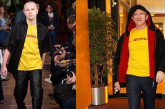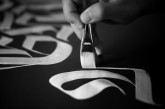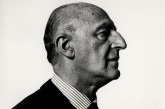(…) For Ai Weiwei, the relation to the past –as evident in his conception of the readymade – was neither patricidal nor iconoclastic. Instead, it became a consideration of how one might conceive of the “newness of tradition”.(…) Charles Merewether – parket nº81
China is the centre of World’s attention because of the Olympics coming in the next months. After so many years of economic growth, China has the opportunity to step into the world’s stage. It’s difficult to say whether there will be a different China after the Olympics, or if there is already a different one right now. Whatever is going to happen, it’s impossible to look at China in the same way of the past years. China has become a world player, and a sparkling culture centre.
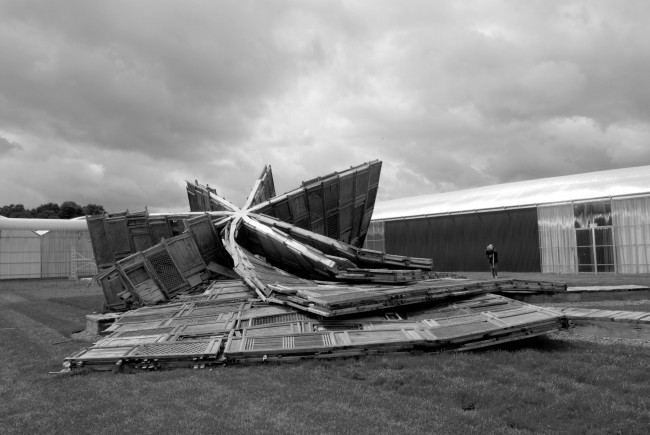
Ai weiwei is one of the main figures in the art scene in China, as an artist, architect, curator and editor. His latest collaboration with Herzon and Meuron in the project of the national stadium, one of the staple icons of the Olympic Games and an important image of the new China, gave him a lot of visibility. What is surprising is the discovery of his work, beyond this first mediatic layer. Faraway from fashion and media pressure, Ai´s work is a way of thinking, expressing and communicating ideas rather then simply focusing in formalistic aspects.
One of these examples is the fascinating architecture that works with all the potential of history and culture. Ai creates totally unpretentious buildings, very simple and even archaic, which don’t try to be more than what they are; free from pressures, from the crazy ambition for the dramatic use of form. He shifts from art to architecture, saying that he goes from the useless to the useful, as if he wants to build his work in a different way with the same way of thinking. It’s as if his art work was the same as his architecture work. Actually it’s perfectly possible to connect the two, as we were not expecting forms and styles but ideas and aesthetics.
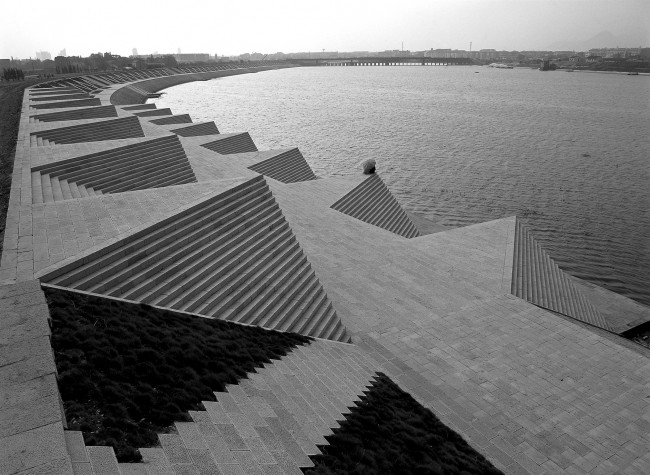
When he left New York, upon his return to Beijing he found a China on the way to embracing a western-style commodity culture market economy. A profound shift had taken place. Ai weiwei’s work in that period was showing very clearly the use of elements of Chinese culture within the limits of a US commodity economy. Especially the works of “dropping a han dynasty urn” or han dynasty urn with coca-cola logo. Later works such as the furniture series Ming and Qing Dynasty furniture piece or the forever bicycles (a bicycles sculpture that converts an iconic object of Chinese life into a giant geometric structure, pointedly abstracting it of any content), go forward in the engagement of the new vision and conception of the “newness of tradition” in China. Like Marcel Duchamp in other times, Ai weiwei has played a key role in linking two different art communities, the old and the new China.
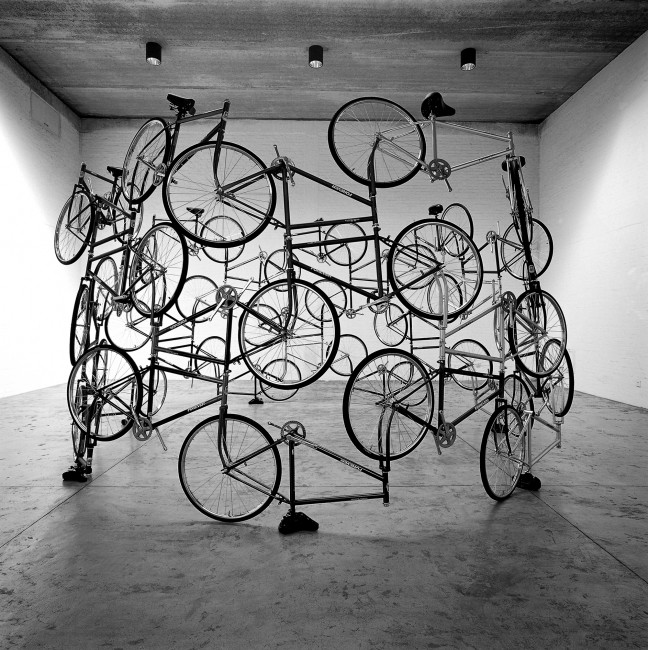
Ai weiwei´s work is one body for which it is impossible to find the joints; his work and persona form a single identity. The architecture work could seem as if the useless artist becomes a useful architect, but I see it more as a different page of the same text, even if I could be mistaken, the limit of the two fields is weaker then ever, and these different fields are becoming the same open field, somehow against the specialization and subdivision of the art and the creative areas of the last century. It’s not the coming back to renaissance but it’s the opening up of borders brought about by industrialization, In fact the art as a discipline always worked in a weightier field than the actually profession practice
Interview for D’ARS (Pedro Campos Costa)
Caochangdi/Beijing, February 22, 2008
What is the relation between your artistic works and the architecture works? Is it two different approaches or is it the same kind of thinking in two different professional outcomes?
I never take art or architecture as a profession; it all comes from the same kind of thinking. I start without a strong consciousness of being an artist or architect, artist more consciously but not architect. It comes out naturally with the kind of judgement that is more aesthetic and philosophical rather than in terms of styles, shapes or images. Architecture is a result of needs, it is more practical and it is necessary, but of course at the same time aesthetic needs are also necessary.
I see a very fine sensibility in your work, somehow you have relations with Chinese tradition, in contrast with other Chinese artists and architects who are fascinated with the contemporary world and cut with the past. Is Chinese culture and tradition a theme in your work? How important is it to make this link?
I have a strong understanding of Asian art which enriches my practice but I am not consciously using Chinese or any other cultural influence as an advantage. It is rather learning and exploring the possibilities through education under these influences because that is what I am familiar with. Somehow it does have this kind of connection with the past, but ironically I am also very critical of the past and trying to break with it is my attitude.
Fake design is the name of your studio. I can find representation method in your work, but not really fake design. Is Fake a relation to your times?
My work is always dealing with authenticity and value. It is related to value judgement, relate to how our behaviour affects our interpretation and what it appears to be and what it is and how solid and accurate a name or an interpretation is. But “Fake” comes from another story, if a Westerner says the word it is “fake”, but if a Chinese says it, it sounds like “fuck”, that is a very interesting aspect.
On your website you have a diagram that shows the complexity of nowadays, is that an issue for art/architecture activity? Is it important for your activity? Do you feel in your activity political, economical and cultural responsibilities?
I live in this world, I have to face whatever comes to me which can be political or social standards and opinions, and I cannot avoid facing these judgements. Normally I try not to judge something before I react to it and sometimes people may think it is witty, sometimes they think it is courageous, sometimes that it is silly and stupid. But for me it is the way I live, I have to take the action and respond to what happens to the world I am living in.
How is it nowadays for an artist, already known in Europe, to live in China?
I still think China is a very exciting place to be because it is in transition, it really changes morals and has a lot of vague areas, people don’t know how it will turn out to be. The boat is too big and the journey is so long, but at the same time there is a lot of excitement, it stretches your knowledge of the world and you can see a lot of surprises. And you also feel as part of a change, you have this illusion and you do see many changes happening.
I think these are interesting times.
Pedro Campos Costa


